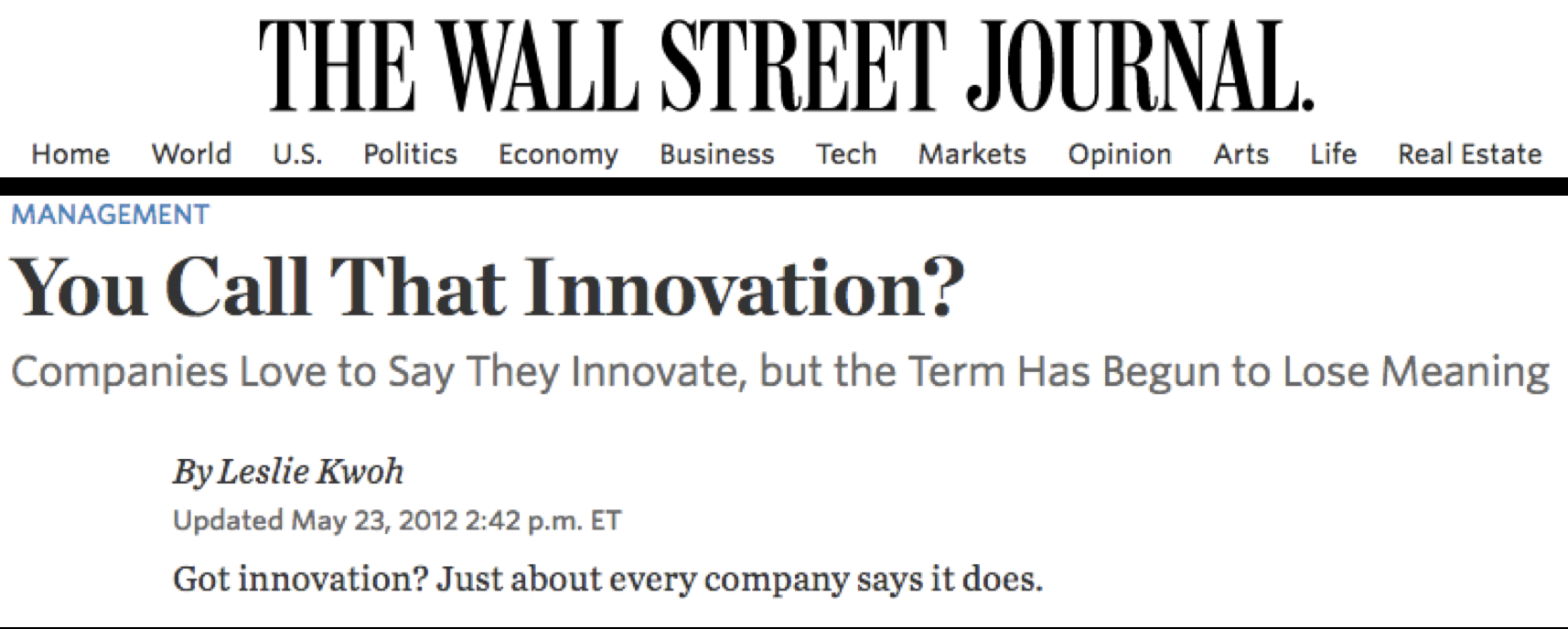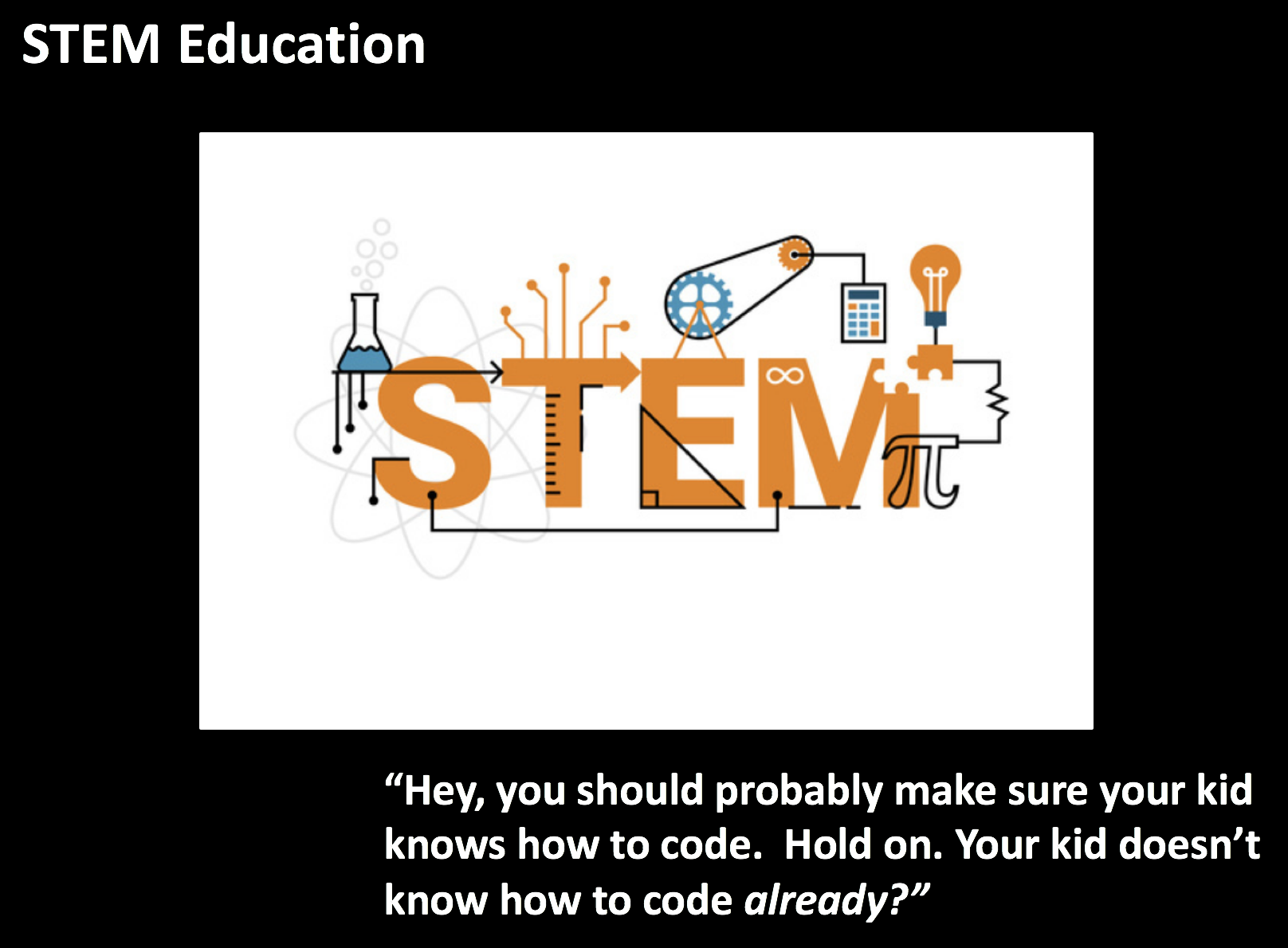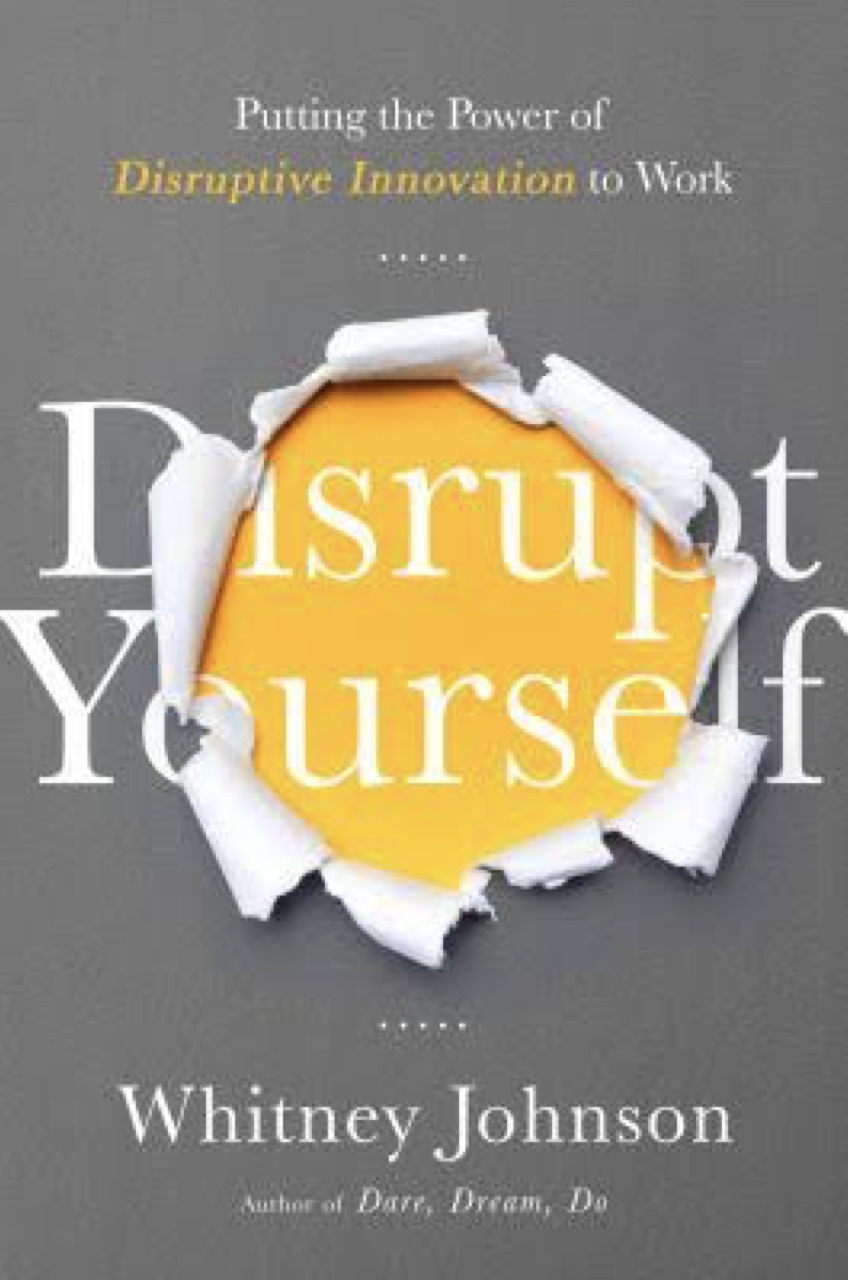This is a talk I gave at a meeting of InnoAnon, a 12-Step based group for innovation-speakers in recovery, which was held at the professional society 4S. Eventually, I hope to use this talk as the basis of an essay for the journal SSS, but I won't be able to get to that for some time.
Hi, my name is Lee, and I’m an innovation-speaker in recovery. My innovation-speak of choice is neo-Schumpterian economics.
I'd like to thank Andrew for organizing this InnoAnon meeting and for asking me to share my story, and I'd like to thank Seyram and Holly for being so supportive and bravely agreeing to share their stories too. It feels really good to be here. (chokes up a bit)
Like the rest of you, I keep asking myself, why are we constantly surrounded with innovation-speak even though left-wing, socialist publications like the Wall Street Journal long ago realized that innovation had become an empty buzzword?
And like many of you, I believe that this jargon remains durable and prevalent primarily because it serves a multitude of interests: from tech executives looking to hype their products to investors; to university presidents hoping to boost federal research dollars; from anxious parents praying their children will have a place in the future economy; to political parties who have no vision for how to improve our current situation beyond the Hail Mary throw of economic growth. In this way, innovation is an ordering-concept that particular interests have used to try to transform and reform nearly every level of society.
This is not the first time that a single concept has held such power. As historians have examined, during the Progressive Era, individuals in the United States and other industrial nations sought to remake nearly every institution through the notion of efficiency: this is true of important high-level federal and industrial initiatives as Secretary of Commerce Herbert Hoover’s 1921 report, Waste in Industry, as it is the efforts of home economists to make cleaning, cooking, and other forms of household maintenance and production more efficient, giving us things like Cheaper by the Dozen.
But since I have come to accept that my life had become unmanageable, have come to accept my higher power, and began working the steps with you all, I have been wondering, How should we think about and examine efforts to remake society in innovation's name?
As I've pondered this question and attended InnoAnon meetings like this one, my mind has returned again and again to a book I read when I was young and pretentious. In the Fifth part of Volume 1 of the History of Sexuality, Michel Foucault Foucault lays out his notion of biopower. He writes that biopower, or a bio-politics of the population, and discipline, or an anatomo-politics of the human body, constituted “two poles of development linked together by a whole intermediary cluster of relations.” So, in this simple picture, at the top of the pole, we have statistical and other methods for viewing and steering the entire population, and then at the bottom, we have the “micro-physics of power” centered on disciplining, forming, and training the individual human. In his late work, Foucault would add to this picture by examining ethics, or methods of self-discipline or self-transformation, which often took the form of resistance
Foucault obviously focused on the place of sexuality in this scheme, but as we know well his framework needn't be limited to that case. After all, innovation is a wonderful example of the modernity that Foucault described as power “bent on generating forces, making them grow, and ordering them.” (136)
Now, what I want to argue simply is that, if we view biopower and discipline and ethics as operating on different levels and we examine this “whole intermediary cluster of relations,” what we find are further levels of power, action, transformation, and reform. For now, I will suggest that two additional levels of power or transformation are essential for thinking about innovation, both are meso-level constructs, namely the level of the organization and the level of the region or locality. Now, our InnoAnon meeting today is focused on regional innovation policy. While telling the story of my fall and rise, I first want to lay out a general framework for thinking about the role that innovation-speak plays in our society. I'll be addressing these levels in no particular order, before turning to the crucial role that regions and localities play in the ideology of innovation.
1. INNOPOWER
Increasing use of the word innovation is a distinctly post WWII phenomenon. As scholars like Benoit Godin have shown, the intellectual roots of innovation-speak are many and varied, but particularly important for this story, I believe, is the rise of the economics of innovation. A turning point came in the late 1950s when economists, like Robert Solow and Kenneth Arrow, began studying national economic statistics, which had only become available since the great depression. Traditional factors of the population, like labor and capital, simply could not explain economic growth, and these economists hypothesized that growth was caused by technological change, or innovation.
In the late 1970s, the term “innovation policy” began gaining purchase in Europe and the United States. Now, “innovation policy” put it in clearer and clearer terms that the point of government action, policy, rules, laws, tax codes, etc., etc. should be to induce innovation. Numerous statistical indicators of innovative activity have been proposed during this period, from measures of R&D spending to patent counts, from hoodie sales to the number of squiggles put on white boards and post it notes. Increasingly, innovation became a panacea, a solution to all problems, including stagnant productivity, a declining middle class, multigenerational poverty, opioid addiction, and too many working-age white guys doing nothing but playing video games.
2. DISCIPLINE
If macro-scale of national measures and policy-making has focused on the puzzle of innovation, one solution has often been clear: making the nation’s and globe’s children more innovative by getting scientific and technical skills into their bodies and minds; by teaching them “design thinking”; by making them makers and hackers and sending them to “coding camp.”
Such solutions have been deemed necessary by influential publications such as Paul Romer’s 1990 article “Endogenous Technological Change” which has been cited nearly 25000 times, and which recommends public subsidization of “accumulation of total human capital,” which basically meant science and engineering programs. The National Academy of Sciences in 2007, titled Rising Above the Gathering Storm: Energizing and Employing America for a Brighter Economic Future. The board that wrote the report was dominated by corporate CEOs and university presidents. They argued (self-interestedly) that the United States needed to spend more on technical research and get more young people into science and engineering. Beginning in the early 2000s, leaders at the National Science Foundation began using the self-serving term “STEM education” and touting its importance for national well-being.
3. ETHICS
Not only do people seek to form their children in the image of great innovators, they seek to remake themselves in this image too. As Eva Illouz has taught us we can think of self-help books as a technology of self-transformation. In this light, the business sections of bookstores and airport book stalls are full of little else than self-help books that will assist you in becoming more innovative, more disruptive, more agile, leaner, better. (Here slides were shown of business self-help books, including DeGraff’s Innovation You, O’Loghlin’s Innovation is a State of Mind, and ending with Whitney Johnson’s Disrupt Yourself: Putting the Power of Disruptive Innovation to Work.)
I thought this book might be about slamming a saucy mexican platter after a long night getting hammered with friends, but it turns out to be a boring self-help book.
While it’s easy to make fun of this stuff, I think it’s important for us to confess how it calls to us. Once, when I was hitting bottom, I . . . . (pauses, chokes up) . . . I fantasized about becoming a thought leader. (Whispered: Oh dear God)
4. ORGANIZATIONS
The number of business self-help books offering to turn managers into innovators is only outnumbered by the number of books dedicated to making organizations. Here, the mass of publications is simply too mountainous to even really begin. A Google Books search for “innovative business” gets nearly 2 million hits. We can examine nearly everything taught in business schools during the last forty years as well as whole libraries of organizational theory books. Since the 1990s, many individuals became enamored with Clayton Christensen’s theory of disruptive innovation. (Which by the way you can hire Christensen via his consultancy named Innosight, if you’d like some really expensive advice.) Recently, however, social scientific analysis of Christensen’s own data does not support Christensen’s own conclusions about disruptive innovation, which not nearly as prevalent or important as Christensen claimed. Put another way, “management science” is typically hooey, but since it too is really a self-help literature that feeds on managers’ anxieties, ambitions, and desires, its lack of veracity could hardly matter.
The desire to become innovative is certainly true of business executives, but it also holds true for universities, as books like Miroski’s Science-Mart: Privatizing American Science, Elizabeth Popp Berman’s Creating the Market University: How Academic Science Became an Economic Engine, and Lawrence Busch’s Knowledge for Sale: The Neoliberal Takeover of Higher Education show us. In hindsight, many changes made to universities since the late 1970s—such as the Bayh-Dole Act of 1980, which allowed researchers to patent discoveries/inventions supported by federal funding—were made to foster and generate innovation. Many of these changes have been harmful, which is what you’d expect from actions done for a false god.
5. REGIONS AND LOCALITIES
This brings us finally to the topic of our meeting today: how innovation-speakers have thought about and attempted to reform regions and localities in innovation’s name. It’s important to realize that at least since Alfred Marshall’s writing on “industrial districts” economists have realized that geography plays an important role in economic growth and industrial activity, and that industrial activity often developed in distinct localities, now called clusters, though why precisely clusters develop remains mysterious. In the US context, when pondering clusters we can think of the auto industry in Detroit, steel industry in Pittsburgh, machine tool industry in Youngstown, OH, etc., etc.
Of course, in the age of innovation-speak, one locality has gained more attention than any other. Interestingly, it was at about the time that the term “innovation policy” emerged that the first books began being published on Silicon Valley. Since that time localities throughout the United States and all over the globe have wondered how they can become the next Silicon Valley. When I delivered a talk called “The Innovation Fetish” at the Sydney Opera House, some Australian politicians were proposing new laws to develop what they called “Kangaroo Valley.”
A number of economic theories, such as “National Innovation Systems,” “Regional Innovation Systems,” and “Innovation Clusters,” have been developed to describe and explain regional economic development. Policies to increase innovative activity in localities take a number of forms, but perhaps two are the most important. First, we can think of Richard Florida’s popular theory of the "creative class." While the book’s title focuses on a class of people, its normative upshot is that cities should remake themselves to be appealing to hipsters, Apple-users, and other creative types. Florida’s policy recommendations have been picked up around the world, and again he has a consultancy or two that you can hire. Recently, Jacobin published this article suggesting that Richard Florida was sorry because it all turned to be bullshit. But my collaborator Andy Russell and I closely read this article and could find no evidence that Florida was in fact sorry.
The second important type of policy aimed to make regions localities more innovative are basically economic incentives. “Technology-based economic development” is an older term for this kind of policy. Through a mixture of tax policy and subsidization, localities try to foster the creation of new businesses, say through the development of “business incubators.” Interestingly, if you search for the term “technology-based economic development,” what you find are slides from consulting companies, like Tedco and Batelle. Selling these kinds of ideas to clueless local officials is big business. Then the officials sit scratching their heads after building an incubator and seeing it sit empty, moldering.
In 2014, the Brookings Institution generated a new version of this basic technique, called the “innovation district,” and that idea has been picked up by localities all over the country, perhaps even around the globe. I do not make predictions, but if I was a betting man I would put my money against these things. If they do fail, I think the only good thing about them is that they will be a kind of conceptual art or physical comedy, like Charlie Chaplin imitating Clayton Christensen, monuments to human foolishness and frailty.
Conclusion
Beyond the intellectual reasons for studying innovation, I think critical innovation studies is also important for efforts to resist the kinds of changes made in innovation’s name. To the degree, that innovation-speak leads us to overly focus on novelty and the new and ignore other realities, like maintenance, it is an intellectual lie; to the degree that it allows us to pretend that innovation alone will solve important social problems, it’s a moral lie; and it’s also not clear that it’s effective even on its own terms. We’ve been doing innovation policy since the late 1970s. Are we currently experiencing a period of staggering economic growth? No. Just the opposite. And yet we are changing fundamental institutions in our culture, like universities, in ways that really damage them.
There are many people in our communities working on these topics today. The people speaking at this meeting; Benoit Godin and Matt Wisnioski writing about the history of innovation; Christina Dunbar-Hester working on maker communities, and many more. But I also believe that we can study this topic more systematically. To that end, Matt W. and I are forming something called the CRIMES Lab at Virginia Tech: CRIMES stands for Critical Innovation, Maintenance, and Engineering Studies.
All I can say about InnoAnon is thank God there’s a community like this one. Keep coming back; it works if you work it.





